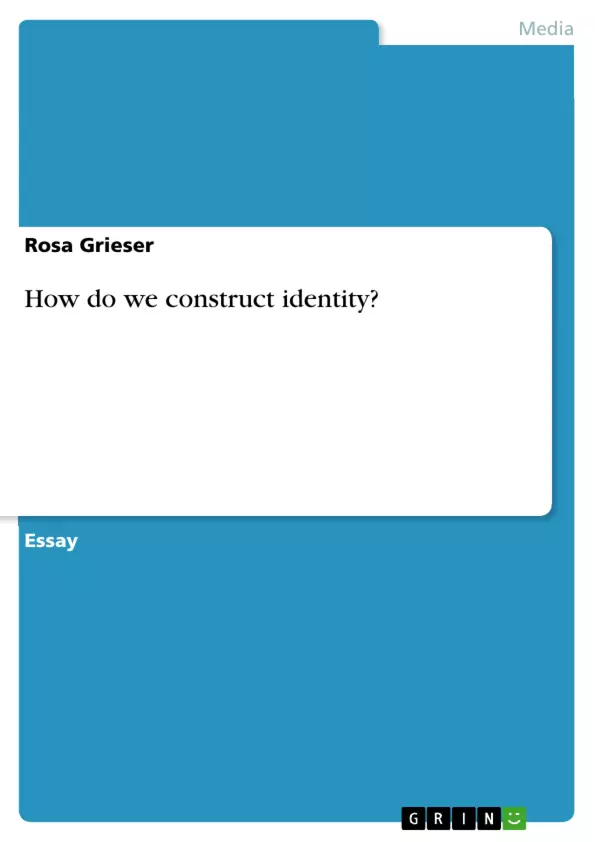What is Identity?
Identity as an abstracted and immaterial term or construct has been taken on
by different academics. The philosophy, for instance delves into identity on a
personal level and asked for “Who am I?”, “Where do we come from?” and
“How do we think?” (Hoffmann:2010:70). The psychobiology assumes that
some parts of our identity are pre-determent by our RNA, a part of our identity
would therefore be a mixture of our parentʼs ones (Barkhaus:1996:31-38).
Academics of pedagogic and education are interested in the process of selfdiscovery
within the puberty (Osterloh:2010: 31-36). There are many more
schools which are dealing with identity, all of them intersect and influence each
other. The perspective of the Culture Studies1offers in matters of identity multiple
approaches as it is an interdisciplinary field in which perspectives from different
disciplines can be selectively chosen to observe the relation of culture
and identity (Baker:2005:7). The term identity emerged during the 90s as the
central theme into the cultural studies and raised the question “What is identity?”
(Backer:2005:219), in order to explain the “…consciousness of self found
in the western world …” (Longhurst/Smith/Bagnall/Crawnford/ Ogborn:
2008:142).
Purpose of this paper is to use the approach of the culture studies to find out
how we, as human, constructed identity. Therefore it is imported to include and analyse elements which make up identity and to embrace how we exhibit
oneʼs own identity.
Table of Contents
- What is Identity?
- Identity as Social Construction
- Identity as a Narrative
- Identity as Roles and Masks
- Intercultural Transit
- Identity and Language
- Identity and Difference
- Cultural Identity
- Identity and Language
Objectives and Key Themes
This paper aims to explore the concept of identity from the perspective of Cultural Studies. It analyzes how individuals construct their identities within a cultural context, highlighting the interplay of social, linguistic, and cultural factors.
- Identity as a social construction
- The role of culture in shaping identity
- The importance of narrative in understanding identity
- The influence of language on identity formation
- The interplay of similarity and difference in identity
Chapter Summaries
The paper begins by defining identity and exploring different perspectives on its formation. It then delves into the concept of identity as a social construction, highlighting the influence of cultural representation. Further, it analyzes Giddens' theory of identity as a narrative, where individuals construct a sense of self through stories they tell about themselves.
The paper then examines the notion of identity as roles and masks, emphasizing how individuals adopt different identities based on social expectations and contexts. It explores the concept of "intercultural transits" where individuals navigate multiple cultural identities in a globalized world.
Finally, the paper discusses the role of language in identity formation, highlighting the importance of shared language and communication patterns in shaping group identities.
Keywords
The key terms and concepts covered in this paper include identity, cultural studies, social construction, narrative, roles, masks, intercultural transits, language, communication, similarity, difference, and cultural identity.
- Arbeit zitieren
- Rosa Grieser (Autor:in), 2012, How do we construct identity?, München, GRIN Verlag, https://www.grin.com/document/212410



